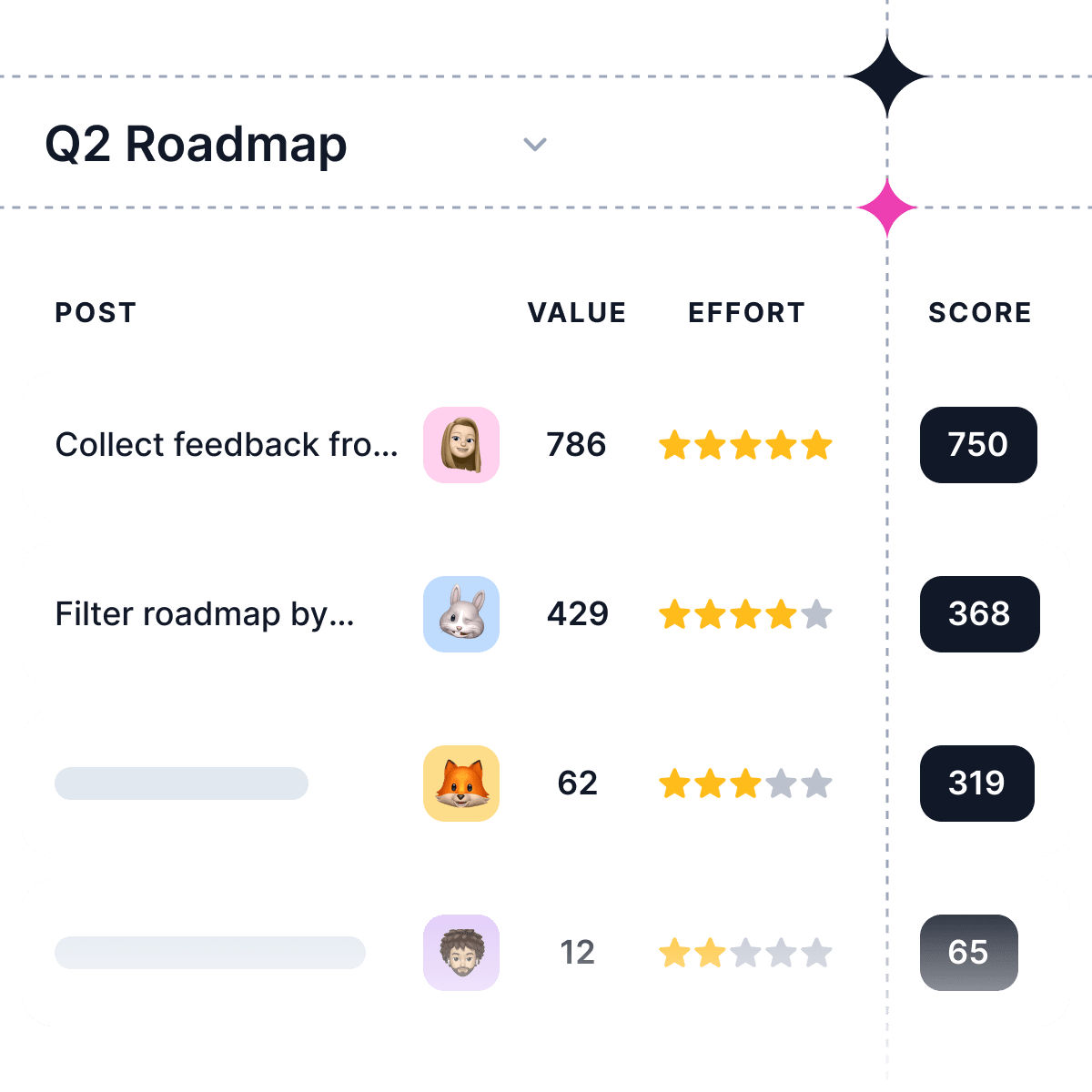Roadmapping is a strategic planning technique that helps organizations define and prioritize their goals and objectives. By creating a visual representation of the organization's direction, roadmapping enables better decision-making and resource allocation.
This blog post will provide an overview of roadmapping and outline the six essential steps to creating an effective roadmap.
What is Roadmapping?
Roadmapping is a strategic planning process that helps organizations define, communicate, and coordinate their product or project development initiatives. It involves creating a roadmap, which is a high-level visual representation of the organization's goals, timelines, milestones, and major dependencies involved in the project. A product roadmap is a plan of action used by the product team that outlines the vision, goals, and progress of a product over time. It is a tool that aligns the organization around short and long-term goals for the product or project, and how they will be achieved.
Roadmapping helps organizations prioritize their initiatives, align stakeholders' priorities, and track progress. The process can be used to develop a strategic plan for new products or to enhance or improve existing ones. It provides a framework for decision-making, as well as a communication tool for sharing priorities and progress with stakeholders.
Why Roadmapping is Important?
Roadmapping is crucial for any organization seeking to achieve its long-term goals. It allows companies to:
-
Align their objectives with their overall vision
-
Develop a clear understanding of their priorities
-
Identify potential challenges and opportunities
-
Allocate resources effectively
-
Foster collaboration among team members
-
Track progress and measure success
What are the 6 Steps to Roadmapping?
Step 1: Define Your Vision
The first step in roadmapping is establishing a clear vision for your organization. This vision should be a concise statement that highlights your organization's purpose, the value it brings to its stakeholders, and the impact you aim to create in the world.
Tips for Defining Your Vision
-
Think about what your organization strives to achieve in the long term and how it contributes to the greater good
-
Consider the needs and expectations of your stakeholders, including customers, employees, and partners
-
Keep it simple and focused, but also inspiring and aspirational
Step 2: Identify Your Objectives
Once you have a clear vision, the next step is to determine the specific objectives that will help you achieve them. Objectives should be clear, measurable, and time-bound, providing a concrete roadmap for your organization's growth.
Tips for Identifying Objectives
-
Use the SMART criteria (Specific, Measurable, Achievable, Relevant, and Time-bound) to ensure your objectives are well-defined
-
Focus on high-level goals that align with your vision and drive your organization forward
-
Limit the number of objectives to ensure focus and avoid spreading your resources too thin
Step 3: Conduct a Gap Analysis
A gap analysis is an essential step in the roadmapping process. It involves assessing your organization's current state and comparing it to your desired future state. This analysis will help you identify the gaps that need to be addressed to achieve your objectives and fulfill your vision.
Tips for Conducting a Gap Analysis
-
Evaluate your organization's strengths, weaknesses, opportunities, and threats (SWOT analysis) to gain a comprehensive understanding of your current position
-
Consider both internal and external factors that may impact your progress toward your objectives
-
Involve key stakeholders in the process to ensure a diverse range of perspectives and insights
Step 4: Prioritize Your Initiatives
After identifying the gaps, the next step is to prioritize the initiatives that will help you close them. Prioritization ensures that resources are allocated effectively and that your organization focuses on the most important initiatives that will drive the most significant impact.
Tips for Prioritizing Initiatives
-
Use a consistent and transparent prioritization framework that takes into account factors such as impact, feasibility, and urgency
-
Engage cross-functional teams in the prioritization process to ensure buy-in and support
-
Regularly review and adjust priorities as needed to account for changes in your organization's environment or strategic direction
Step 5: Develop Your Roadmap
With your initiatives prioritized, it's time to create your roadmap. A roadmap is a visual representation of your organization's strategic plan, showcasing the sequence and timeline of your initiatives, as well as the resources and milestones associated with each.
Tips for Developing a Roadmap
-
Choose a suitable format (e.g., Gantt chart, timeline, or swimlane diagram) that best communicates your plan to your stakeholders
-
Clearly indicate the dependencies and interdependencies between initiatives to highlight potential risks and opportunities for collaboration
-
Communicate your roadmap to all relevant stakeholders, ensuring they understand their roles and responsibilities in executing the plan
Step 6: Monitor and Adjust
Finally, it's essential to monitor your progress and adjust your roadmap as needed. Regular reviews and updates will ensure that your roadmap remains relevant and aligned with your organization's evolving needs and changing market conditions.
Tips for Monitoring and Adjusting Your Roadmap
-
Establish key performance indicators (KPIs) to track progress against your objectives and measure the success of your initiatives
-
Schedule regular reviews to evaluate progress, identify potential roadblocks, and make adjustments to your roadmap as necessary
-
Communicate changes to stakeholders, maintain their engagement, and ensure they are aware of any updates or shifts in priorities
10 Tools and Software for Roadmapping
There is a wide variety of tools and software available to help organizations create, manage, and share their roadmaps. These solutions can streamline the roadmapping process, facilitate collaboration among team members, and provide valuable insights to drive decision-making.
Here are some popular tools and software for roadmapping:
1. Supahub
Supahub is a user-friendly roadmapping tool designed for product managers. The platform offers an intuitive interface for creating visual roadmaps, prioritizing initiatives, tracking progress, and collaborating with team members. With its drag-and-drop functionality, Supahub makes it easy to adjust your roadmap as priorities change.
2. Canny
Canny helps organizations collect user feedback and prioritize feature requests. By integrating customer input into your roadmapping process, Canny enables you to make more informed decisions about which initiatives to prioritize. The platform also provides a public-facing roadmap so customers can track the progress of their requested features.
3. Aha!
Aha! is a comprehensive product management platform that includes robust roadmapping capabilities. The software allows you to create detailed roadmaps complete with goals, initiatives, releases, and features. Aha! also offers advanced prioritization tools, integration options with other project management tools, and customizable reporting features.
4. Trello
Trello is a popular project management tool that can be adapted for roadmapping purposes using its flexible board-based structure. Using Trello's cards and lists, you can visually represent your roadmap's initiatives along with their associated tasks or milestones. Trello also supports real-time collaboration among team members.
5. Upvoty
Upvoty focuses on gathering user feedback and feature requests to inform your roadmapping decisions. Users can upvote their favorite ideas, allowing you to prioritize initiatives based on customer demand. Upvoty also includes a public roadmap feature that keeps your users informed about the status of their requested features.
6. ProductPlan
ProductPlan is a dedicated roadmapping tool designed for product managers. Its intuitive interface allows you to create visual roadmaps complete with goals, initiatives, and milestones. ProductPlan also offers prioritization tools, collaboration features, and integration options with popular project management platforms.
7. Roadmunk
Roadmunk is a powerful roadmapping software that helps you create visually appealing and data-driven roadmaps. The platform includes advanced prioritization features, customizable templates, and support for multiple views (timeline, swimlane, etc.). Roadmunk also integrates with other project management tools like Jira and Trello.
8. UserVoice
UserVoice combines customer feedback collection with roadmapping capabilities. By gathering user input on desired features or improvements, UserVoice enables you to make data-driven decisions when prioritizing initiatives for your roadmap. The platform also includes visualization tools for creating interactive roadmaps that can be shared with stakeholders.
9. Nolt
Nolt is a user feedback management tool that helps organizations collect suggestions from customers and prioritize them based on popularity or relevance. By incorporating this feedback into your roadmapping process, Nolt ensures your roadmap focuses on the most impactful initiatives for your users.
10. ProductBoard
ProductBoard is an all-in-one product management solution that includes robust roadmapping capabilities alongside other essential product planning tools such as user research management and idea prioritization techniques. With its customizable roadmap views, prioritization features, and integrations with popular project management tools, ProductBoard is a comprehensive solution for managing the roadmapping process.
When choosing a tool or software for your roadmapping process, consider factors such as ease of use, integration with existing systems (e.g., project management or communication tools), scalability as your organization grows, and the level of customization available to suit your unique requirements.
Conclusion
In conclusion, roadmapping is a critical strategic planning technique that enables organizations to define their vision, set clear objectives, and prioritize initiatives. By following the six steps outlined in this blog post defining your vision, identifying objectives, conducting a gap analysis, prioritizing initiatives, developing your roadmap, and monitoring progress you can create an effective roadmap that drives your organization toward its long-term goals.
Additionally, leveraging the right tools and software will streamline the process and facilitate better collaboration among team members. As you embark on your roadmapping journey, remember to stay flexible and adaptive to changes in your organization's environment or strategic direction. Keep stakeholders informed and engaged throughout the process to ensure a successful implementation of your roadmap and ultimately achieve the desired impact for your organization.


